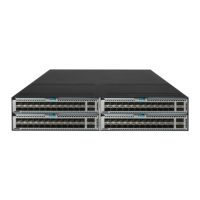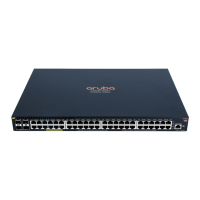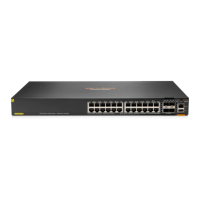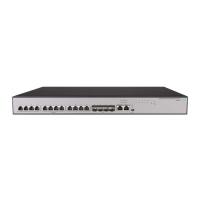272
11.1.1.0/24 Direct 0 0 11.1.1.2 Vlan1
11.1.1.0/32 Direct 0 0 11.1.1.2 Vlan1
11.1.1.2/32 Direct 0 0 127.0.0.1 InLoop0
11.1.1.255/32 Direct 0 0 11.1.1.2 Vlan1
100.1.1.0/24 BGP 255 0 11.1.1.1 Vlan1
110.1.1.0/24 BGP 255 0 11.1.1.1 Vlan1
120.1.1.0/24 BGP 255 0 4.4.4.9 Vlan2
127.0.0.0/8 Direct 0 0 127.0.0.1 InLoop0
127.0.0.0/32 Direct 0 0 127.0.0.1 InLoop0
127.0.0.1/32 Direct 0 0 127.0.0.1 InLoop0
127.255.255.255/32 Direct 0 0 127.0.0.1 InLoop0
130.1.1.0/24 BGP 255 0 4.4.4.9 Vlan2
224.0.0.0/4 Direct 0 0 0.0.0.0 NULL0
224.0.0.0/24 Direct 0 0 0.0.0.0 NULL0
255.255.255.255/32 Direct 0 0 127.0.0.1 InLoop0
2. Display the VPNv4 routing table on the provider CEs, for example, on CE 1.
# Verify that the VPNv4 routing table on the customer VPN contains internal sub-VPN routes.
[CE1] display bgp routing-table vpnv4
BGP local router ID is 2.2.2.9
Status codes: * - valid, > - best, d - dampened, h - history,
s - suppressed, S - stale, i - internal, e - external
Origin: i - IGP, e - EGP, ? - incomplete
Total number of routes from all PEs: 4
Route distinguisher: 100:1
Total number of routes: 1
Network NextHop MED LocPrf PrefVal Path/Ogn
* >i 100.1.1.0/24 1.1.1.9 0 100 0 200 65410?
Route distinguisher: 101:1
Total number of routes: 1
Network NextHop MED LocPrf PrefVal Path/Ogn
* >i 110.1.1.0/24 1.1.1.9 0 100 0 200 65411?
Route distinguisher: 200:1
Total number of routes: 1
Network NextHop MED LocPrf PrefVal Path/Ogn
* >e 120.1.1.0/24 11.1.1.2 0 100 200
65420?

